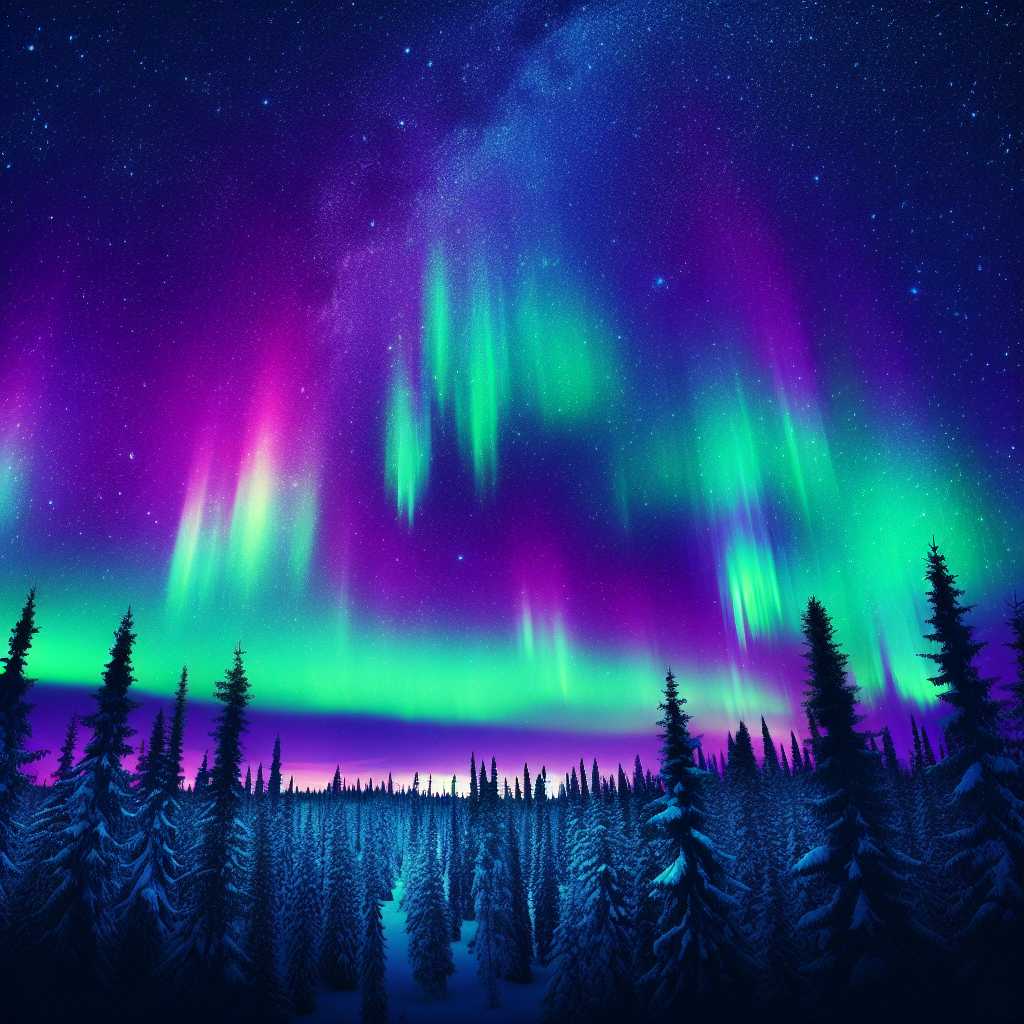The Splendor of the Skies: Northern Lights Making a Spectacular Appearance Tonight
The Aurora Borealis, commonly known as the Northern Lights, is anticipated to put on a breathtaking display tonight. This naturally occurring light show is a source of fascination for both scientists and casual observers around the globe, offering ethereal illuminations that weave through the night sky with an array of colors and patterns. The anticipation for tonight’s celestial event has attracted significant attention from photographers, nature enthusiasts, and tourists eager to witness what promises to be an extraordinary spectacle.
The Science Behind the Auroras
Understanding the vibrant display of the Northern Lights starts with comprehending the science behind the phenomenon. Solar storms are the catalyst for auroras; these occur when charged particles ejected from the Sun collide with particles in Earth’s atmosphere. The interaction between these charged particles and our planet’s magnetic field is what brings about the striking light patterns specific to polar regions.
Solar flares and coronal mass ejections propel vast quantities of solar particles into space, and when these high-energy particles encounter Earth’s magnetic shield, they are drawn towards the poles. Upon reaching the upper atmosphere, they collide with gases like nitrogen and oxygen, resulting in bursts of light that create the magnificent hues we see in the aurora.
Solar activity fluctuates on an 11-year cycle between periods of high and low sunspot activity known as solar maximum and solar minimum. Tonight’s display coincides with a pattern of increased activity which raises expectations for particularly vivid and widespread northern lights.
Where to See the Lights
The Northern Lights are typically observed above the magnetic poles of the northern and southern hemispheres. They are known as ‘Aurora borealis’ in the north and ‘Aurora australis’ in the south. Viewing conditions greatly depend on various factors including geographic location, climate conditions, time of year, and solar activity.
In general, destinations situated at higher latitudes offer improved prospects for aurora sightings. For those in the northern hemisphere places like Iceland, Norway, Sweden, Finland, Alaska, Canada, and sometimes the northern parts of Scotland provide some of the best theaters for this natural performance.
Observation tips for those seeking to watch include finding clear dark skies away from city light pollution, ensuring that local weather is favorable with minimal cloud cover, and picking a vantage point that offers a wide view of the horizon to the north.
Photographing the Phenomenon
Photographing the Northern Lights requires a mix of gear, patience, and technical knowledge. As auroras can vary in intensity and movement, successful photography involves using a digital camera capable of manual adjustments and a tripod for stability allowing long exposure times that can range from seconds to minutes depending on conditions.
Essential camera settings include a wide aperture (around f/2.8 or lower), a high ISO setting that can vary but might start around 1600 ISO, depending on how bright or fast-moving the aurora is. A remote shutter release can also prove valuable to prevent any camera turnover during exposure. Inquire locally or consult online guides tailored to aurora photography for best practices ensuring striking captures of tonight’s event.
Significance in Culture and Mythology
Across different cultures that frequently witness this phenomenon, the auroras have inspired myths and folklore passed down through generations. The Sami people believed that the lights were energies of souls while in Icelandic folklore they were believed to relieve pain and suffering during childbirth.
These tales not only highlight cultural interpretations but also illustrate how ancient civilizations found deep meaning even in understanding little about the science behind it. Today, while we know more about what causes these dazzling displays, they continue to hold symbolic importance embodying natural beauty that fosters universal fascination.
Notes
Auroras may appear in many colors although pale green and pink are common
The lights often appear between 5 pm to 2 am local time when there is darkness
Solar maximum offers more frequent and intense auroral displays
Special tours and accommodations exist solely focused on experiencing northern lights
